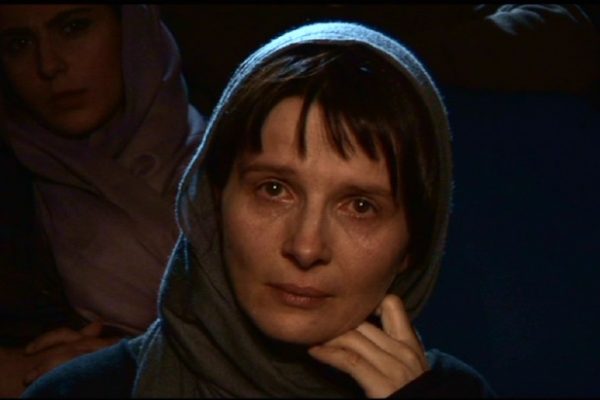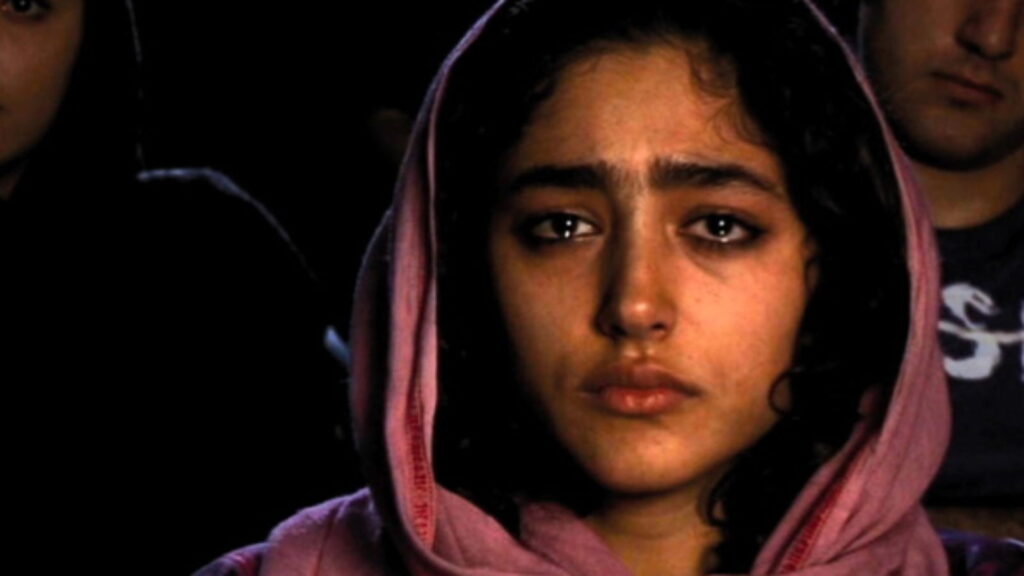Abbas Kiarostami’s Shirin is a perfect example of experimental filmmaking. The film is based on the epic poem Khosrow and Shirin by Nizami Ganjavi. However, Kiarostami is not interested in merely presenting the poem in the film. He has always experimented with different filmmaking styles and enriched films as one of the most important mediums of art. Shirin is not an exception. It is an experiment on image, sound, female spectatorship, reverse filmmaking, female self-sacrifice, and alternative way of storytelling.
As the film starts, viewers see multiple Iranian Women watching a film based on the famous Iranian epic poem Khosrow and Shirin in a dark movie theater. However, these women are not ordinary women. They are all famous Iranian actresses. Renowned French actress Juliette Binoche also appears on the screen. Their faces are getting illuminated by the flickering of lights from the theater screen, and those are captured in close-up shots like portraits. Each actress is shot only for fifteen to twenty seconds and their heads are covered with scarves. As the story progresses, the actresses get attached to the rejoices and sorrows of Shirin and the emotions are reflected on their facial expressions. The viewers can hear the dialogues, music, and soundtrack, but not the film itself.

Kiarostami’s Shirin only shows the close-ups of the Actresses. Viewers never see the actual film because there is no film at all. The story, dialogues, soundtrack, and music were created after the filming was over. Through this film, Kiarostami experiments on the filmmaking process itself. As per the traditional film format, the actors play their characters in accordance with the story. This film is probably the only example where the actors play their characters first and then the screenplay, soundtrack, and music are created. So, it is an example of reverse filmmaking. Kiarostami’s point is very much valid. If actors can follow and reciprocate the emotions as per the story, then why can’t the story follow the emotions and expressions of the actors? In the entire film, there is not a single moment where the dialogues, soundtrack, and music fail to synchronize with the facial expressions of the actresses. Shirin is surely one of the purest and experimental forms of filmmaking.
Shirin also depicts the self-sacrifice of women. The love, sacrifice, and pain of Shirin are engraved in the epic poem Khosrow and Shirin. The facial expressions of the actresses echo the sentiments of Shirin as if her agonies are engraved on their faces. The feelings are deeply personal. The emotions of a group of women match with the tragedy of an epic heroine. Much like Shirin, the sacrifices of women are vividly visible not only in Iran but across the world every day.
In Shirin, Kiarostami did not follow the traditional filmmaking method. He went a few steps forward and created a new language of filmmaking in which the actors play their characters first and then the story is created. He always experimented with forms of filmmaking and put forward his very own contemplations. That’s why his films have always been deeply personal. When the filming process of Shirin was in progress, the story was yet to be decided. Kiarostami chose the epic of Khosrow and Shirin after the filming was over. The screenplay was written by Mohammad Rahmanian based on the story Khosrow and Shirin by Farrideh Golbou based on the epic Khosrow and Shirin by Nizami Ganjavi.
Even though it looks like the film was shot inside a theater, actually it was shot inside Kiarostami’s living room. The lighting was done so efficiently that it looks like the faces of the actresses are illuminated by the flickering of lights from the theater screen. Mahmoud Kalari’s camera captures the innermost thoughts of the actresses through their faces. The music was composed of a historical score by Morteza Hananeh and Hossein Dehlavi. The dialogues were also created after the filming process by a group of narrators led by Manoucher Esmaieli. One hundred and fourteen actresses were filmed including Iranian actresses like Mahnaz Afshar, Taraneh Alidoosti, Leila Hatami, etc. Famous French actress Juliette Binoche came to visit Kiarostami at the time of filming and she was interested to be cast in the film. Eventually, she was cast in the film.
